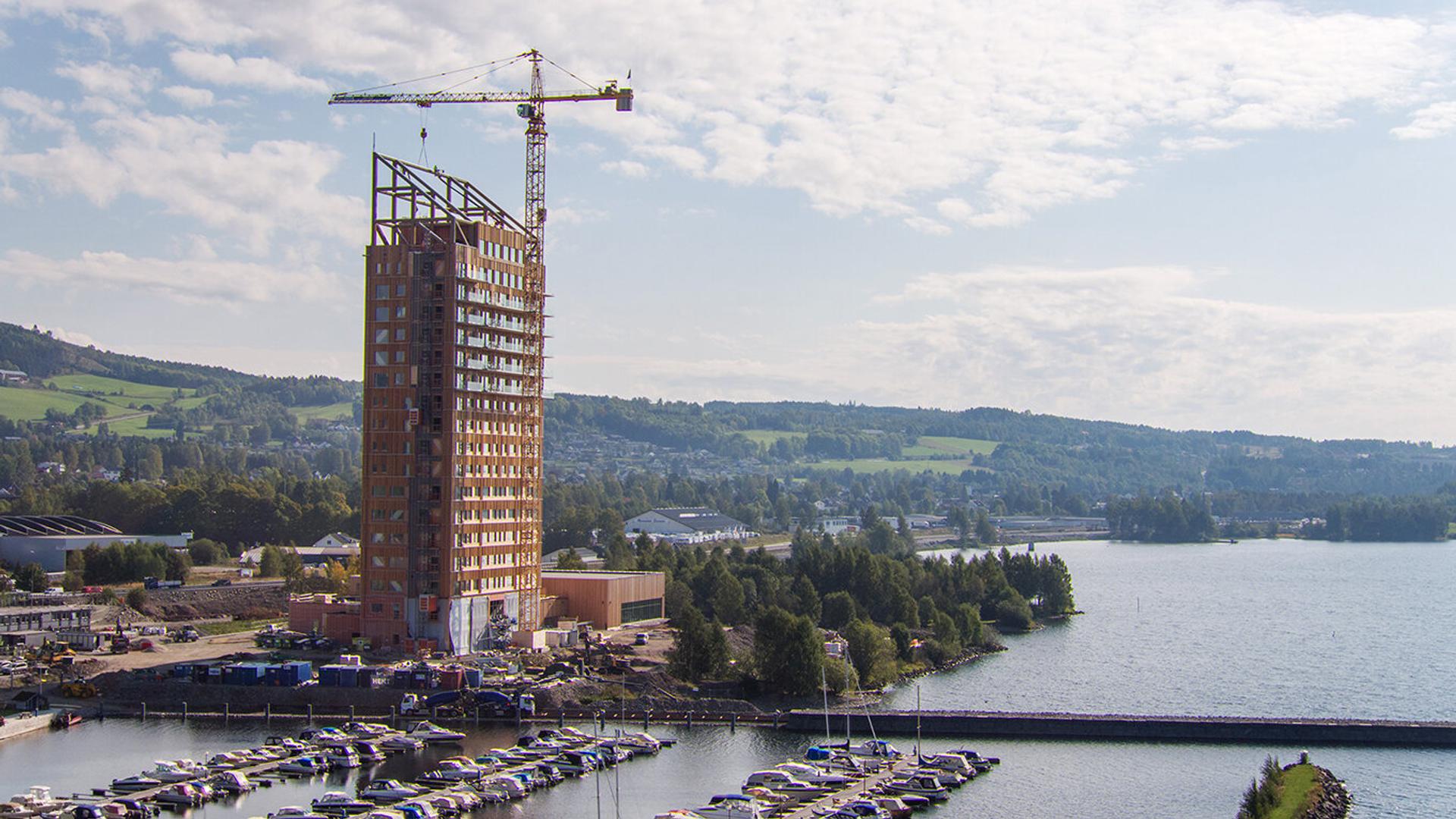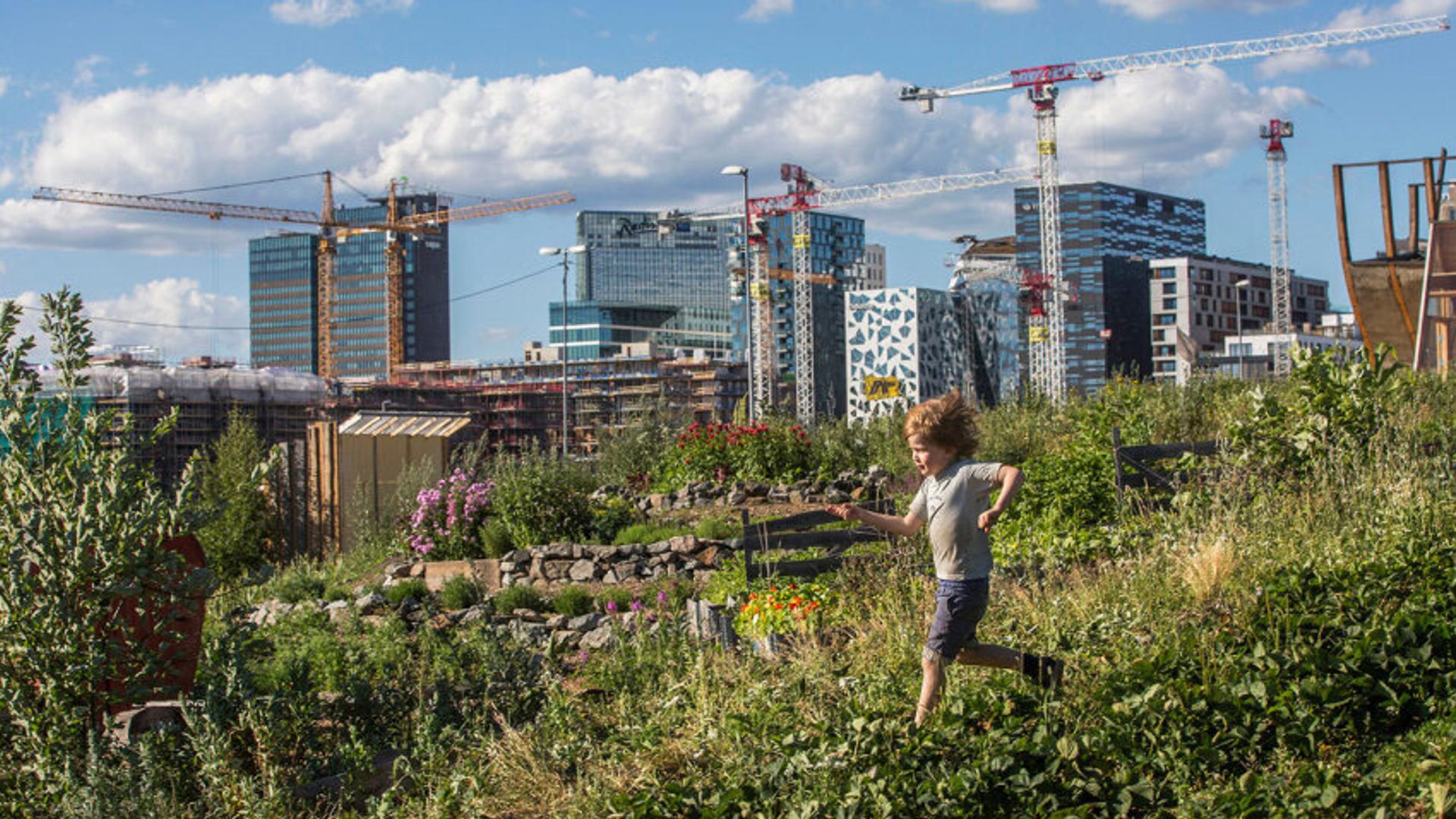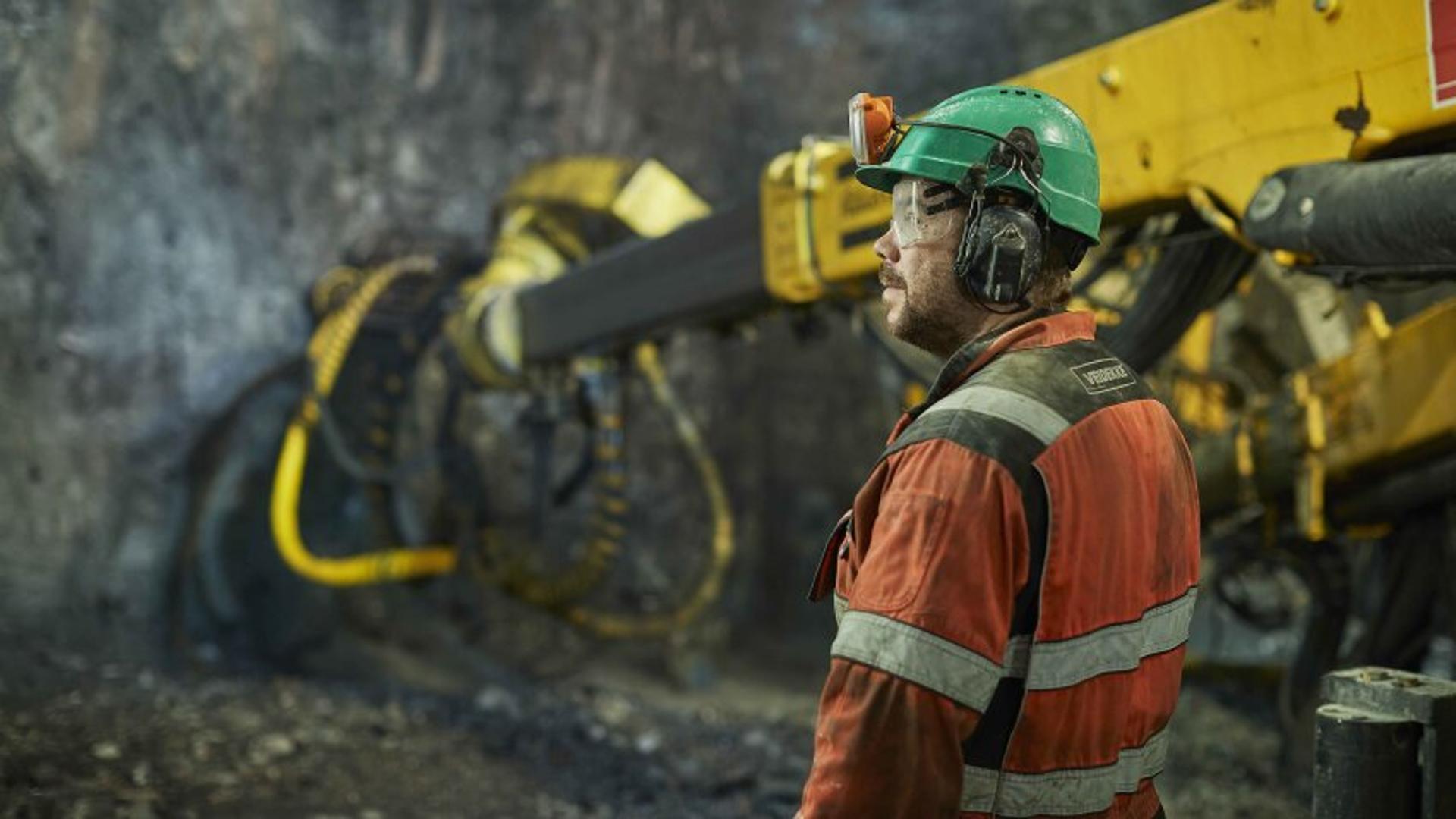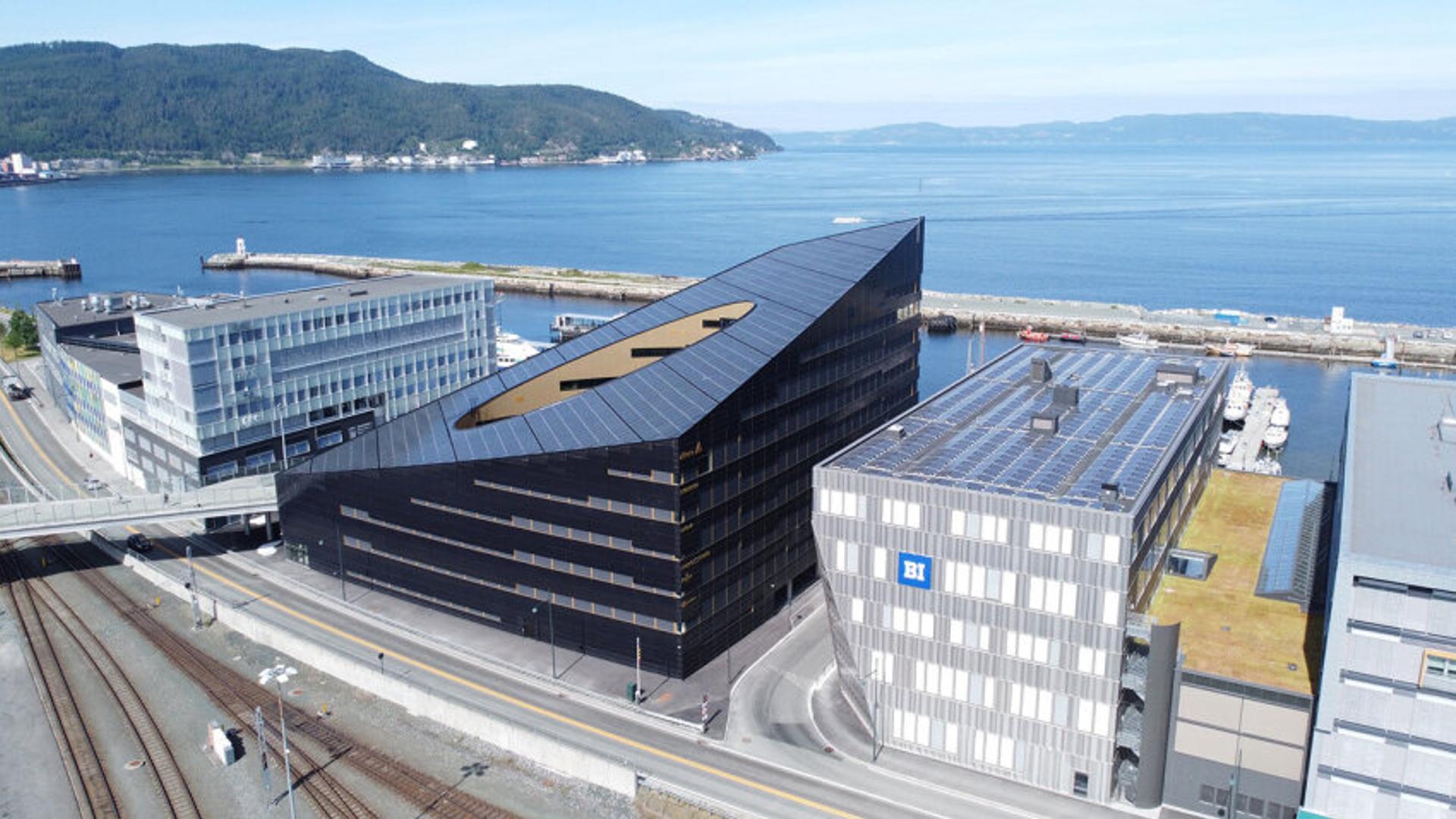Norway is greening the construction industry

The cities of the world are growing dramatically – but such expansion has its climate challenges. New buildings are constructed with carbon-intensive materials produced at industrial scale. Construction sites use fuel-guzzling heavy machinery. Far too many buildings waste energy. All in all, the construction industry accounts for 39 per cent of the world’s greenhouse gas emissions.
Norway is making great progress towards a sustainable construction industry. The country has well-developed mainland industries, with access to high-quality raw materials and the knowledge needed to utilise them responsibly.

A strong public sector – which is the country’s largest construction client – actively uses its position in the market to set stringent requirements for developers, contractors and suppliers. Meanwhile, public support schemes assist environmentally ambitious companies by shouldering some of the financial risk associated with developing, testing and commercialising low-carbon technology.
Norway is also at the forefront when it comes to using artificial intelligence (AI) and the Internet of Things (IoT) to build more resource and energy-efficient buildings.
Here are three areas in which Norway is blazing a trail for the green construction industry of the future.
Carbon capture and storage (CCS)
Production of concrete and steel generates a great deal of CO₂. Steel production is not only energy intensive, but a large stream of carbon emissions is released from iron and silicon as well.
Carbon capture and storage (CCS) at industrial production plants could be a solution to this problem. In 2021, the Norwegian government launched a full-scale CCS project called Longship. Longship will be Europe’s first complete value chain for the capture, transport and storage of industrial CO2 emissions, and is planned to be operational in 2025.
The project is comprised of three sub-projects: two on carbon capture (Heidelberg Materials and Hafslund Celsio) and one on CO₂ transport and storage (Northern Lights).
The carbon capture facility at Heidelberg Materials’ cement factory in Brevik has reached mechanical completion. After a testing phase it is expected to open in 2025.
Northern Lights JV is the first company to offer commercial CO2 transport and storage as a service. The first two of four CO2 transport ships have been delivered and the CO2 receiving facility in Øygarden, Norway, has been completed. It is now ready to receive CO2 from Norwegian and European industries.
Construction of Hafslund Celsio is currently on hold due to increased cost estimates. The project is exploring cost reduction potential, including performing a new FEED study.
Environment-friendly building materials
Another approach is to reduce or eliminate the use of carbon-intensive materials in construction. Norway is heavily forested, and is leading the way in replacing steel with massive timber as a construction material. Moelven has built the world’s tallest timber building, Mjøstårnet, in Brumunddal in eastern Norway. A pre-fabricated, 18-storey building, the timber skeleton was built at a speed of one storey per week using the company’s glue laminated timber (glulam). Glulam can compete with steel when it comes to strength, flexibility and durability.
Norway’s forestry industry is among the world’s most sustainable. Regulations are so strict that virtually no tree can be felled without a commitment to planting a new one. Norwegian timber buildings are therefore among the most eco-friendly buildings in existence.
The new North Pier at Oslo Airport Gardermoen is another example of innovative use of materials. The roof is built of wood, and much of the rest of the building consists of recycled materials, climate-friendly insulation and concrete in which a share of the cement was replaced with reused waste.
And when concrete must be used, why not use concrete that cleans city air? Joma International applies advanced nanotechnology to make concrete that breaks down the polluting chemicals it encounters. This results in cleaner buildings, purer city air and more sustainable urban spaces.

Zero-emission construction sites
Construction sites are a major source of greenhouse gas emissions. Oslo is growing rapidly, and it is estimated that one-fifth of the city’s total emissions come from construction sites. This is why the City of Oslo is using its position as the city’s largest construction client to implement strict requirements for contractors, creating a market for fossil-free machinery. This in turn has paved the way for suppliers such as NASTA and NorBetong to develop all-electric excavators, all-electric mixer drums for concrete mixer trucks, and more.
Norwegian property developers such as Veidekke and NCC are amassing a stable of heavy-duty, electric construction equipment, allowing them to deliver when projects are to be fossil free. The City of Oslo has set a target for all construction sites to be completely emission free by 2030. According to some forecasts, this target will be met already by 2025. At the same time, delegations are coming from around the world to learn about how a city can grow while curbing emissions.
RoMY Clima, meanwhile, has developed a smart solution that provides construction sites with heating without the use of polluting generators.

Energy-efficient buildings and energy-plus houses
Buildings must not only be constructed in a more energy-efficient manner; once they are in operation, they must consume considerably less energy and fewer resources. Norway is a pioneer in zero-energy buildings, which have zero net consumption of renewable energy, and energy-positive buildings, which generate more energy than they use and feed it back into the grid.
The new National Museum in Oslo opened in 2022 and is will be the largest cultural centre in the Nordic region. A zero-energy building, it is heated by water from the Oslo Fjord, among other renewable sources.
The wave of new energy-positive buildings is led in good part by the Powerhouse collaboration: a network of leading actors in the Norwegian construction industry who are joining forces to fashion buildings that have a positive environmental footprint. Powerhouse partners include internationally renowned architecture firm Snøhetta, construction group Skanska, property development and management company Entra, consulting firm Asplan Viak and environmental organisation ZERO.
Energy efficiency in new buildings is not only important in large commercial and cultural buildings; also new homes must consume fewer resources. Nordic Smart House has developed inexpensive, modular energy-efficient buildings that can help to cut emissions while housing the swelling urban population.

